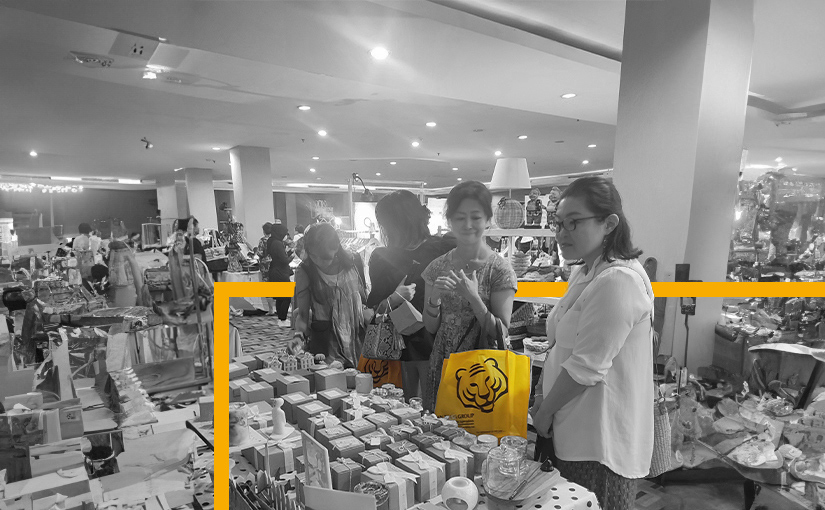How to Pack Fragile Items for Moving: A Simple Guide
Rob Chipman: A Fond Farewell and the Start of New Adventures

Moving into a new home is a great adventure, but it does not come without its share of difficulties, one being the sensitive task of securing your precious belongings when they arrive-most especially the fragile items. From glassware to sensitive electronics, these essential possessions require extra caution when packing them. In this article, we will try to show you how to pack fragile items for moving and provide some easy, efficient tips that can protect your valuables during the journey.
1. Get the Right Packing Supplies
Before you actually start packing those fragile items, you will want to make sure that you have all of the right supplies on hand. High-quality materials will bring a big difference in keeping your belongings safe from damage. Here’s what you’ll be needing:
- Sturdy Moving Boxes: Get a variety of sizes in high-quality, sturdy boxes-invest in double-walled boxes for extra strength.
- Bubble Wrap: It’s the stuff one needs to wrap fragile things to give items in a box some cushion from breakage.
- Packing Paper: This is used to wrap various items and also fills extra space inside the boxes. Do not use newspaper as the ink may leave an imprint on your items.
- Markers and Labels: Make sure all boxes are appropriately labeled as “Fragile” and indicate which way the box should go. This will give movers an indication of how to handle the boxes.
2. Plan and Organize
Packing fragile items requires a great deal of planning and organization. Make a plan for packing by determining what will be packed together in a box. Do not overload boxes or pack too many fragile items in one box, as the chances for damage increase when this is done. Group your items by category, such as glassware, ceramics, and electronics, and then pack items that are alike together.
3. Wrap Each Item Individually
Wrapping up each one of them individually is the most crucial part of packing fragile items. This is a way of ensuring they do not bang against one another, which can lead to breakages. Here’s how to do it:
- Glassware/Dishes: Take a sheet of packing paper or bubble wrap and lay it flat on a surface. Place the item in the middle, then wrap the paper/bubble wrap completely over it, taping the ends to seal. You can offer extra protection to fragile items by wrapping an additional layer of bubble wrap around the first layer. Plates and bowls are packed just like records, standing on their edges so the pressure may disperse not to have the weight on items at the bottom.
- Cups and Mugs: Individually wrap each cup or mug with packing paper, filling the interior of them with paper as well. Additional cushioning can be given by adding bubble wrap. Place upright in a box and avoid stacking many layers.
- Vases and ornaments: Because of their shape, sometimes very irregular, they tend to be more susceptible to breaking. To that end, wrap them carefully in bubble wrap to make sure all parts are well-covered. Use foam sheets or packing peanuts for any space in the box so movement is prevented.
- Electronics: Preferably if possible, send your electronics in its original package. Otherwise, wrap the device in an anti-static bubble wrap and place it inside a really sturdy box with a lot of padding. Take out batteries and tie any moving parts so that they won’t get damaged during transit.
4. Pack the Box Securely
Now that your items are wrapped, it is time to place them inside boxes. Here’s how to do it to protect fragile items:
- Layering the Bottom: You can line the bottom of the box with a layer of packing paper, bubble wrap, or foam peanuts. These materials create a cushioned base for your items.
- Packing Heavier Items First: Place heavier items on the bottom of the box and lighter items on top. This will help prevent heavier items from crushing some of the more delicate ones.
- Fill Gaps: As you go, fill in any gaps with packing paper, foam peanuts, or bubble wrap. This keeps items from shifting in the box during shipment.
- Leave Space at the Top: Once you’ve set everything in the box, allow some space at the top of the box for an additional layer of padding. This will provide further protection against impacts from above.
- Seal the Box: Close the box and seal it tightly using packing tape. Ensure all seams are taped so that the box doesn’t open during the move.
5. Clearly Label Each Box
With fragile items, labeling is necessary. Use a marker to label each box as “Fragile,” what might be inside the box, such as “Glassware” or “Electronics.” You should also note which side should go up. Clear labeling will remind movers to handle these boxes with care and make unpacking easier for you too.
6. Transporting Your Fragile Items
When moving fragile items, how they are transported is just as important as how they are packed. Following are some tips to ensure safe transportation:
- Load Carefully: When loading your fragile boxes into the moving truck, set them atop heavier and sturdier items. Try to avoid putting anything heavy on top of boxes labeled “Fragile.”
- Secure in Place: Make your fragile boxes fixed inside the truck so they don’t get moved around during transport. You can tie them with straps or ropes.
- Consider Transporting High-Value Items Separately: Some particular items that are of a high value or sentimental may be better taken in your vehicle so you have full control over how they will be treated.
7. Unpacking Fragile Items
Carefully unpack the fragile items after reaching your new home. Here’s how you safely do it:
- Inspect Boxes: Check each box for damage before opening them. In case there is any indication of damage on any box, carefully open and check what is inside.
- Unpack in a clean area away from clutter: Give your fragile items a clean and flat surface in order to avoid further risks of dropping or breaking during the unpacking process.
- Take your time: You cannot rush unpacking fragile items. Take your time to carefully take each item from the box and unwrap them, in case they have wraps around them.
8. Dispose of Packing Materials Responsibly
Once you have unpacked your fragile items, there will probably be a lot of packing material left over. Recycling or reusing all these materials is the way to lessen the trash. Many cardboard boxes, packing papers, and even bubble wrap can be recycled or saved for future use. Proper disposal lessens environmental impact and helps keep your new home neat.
Conclusion
Packing fragile items for moving needn’t be stressful. The simple guide on how to pack fragile items while moving will easily guarantee that your delicate belongings stay safe throughout the relocation process. If you use the right materials, pack them carefully, and handle them appropriately, then your fragile items will arrive at your new home in safety to be enjoyed in their new home.
If you’d like to discover the latest information about the moving and relocation world, please also check other industry news from Asian Tigers Group.
Your trusted moving support is only a few clicks away from your hand. Contact the Asian Tigers office near your origin or destination for your next move. You can also check our Frequently Asked Questions resource, AI-powered by Tiger Move Bot.









